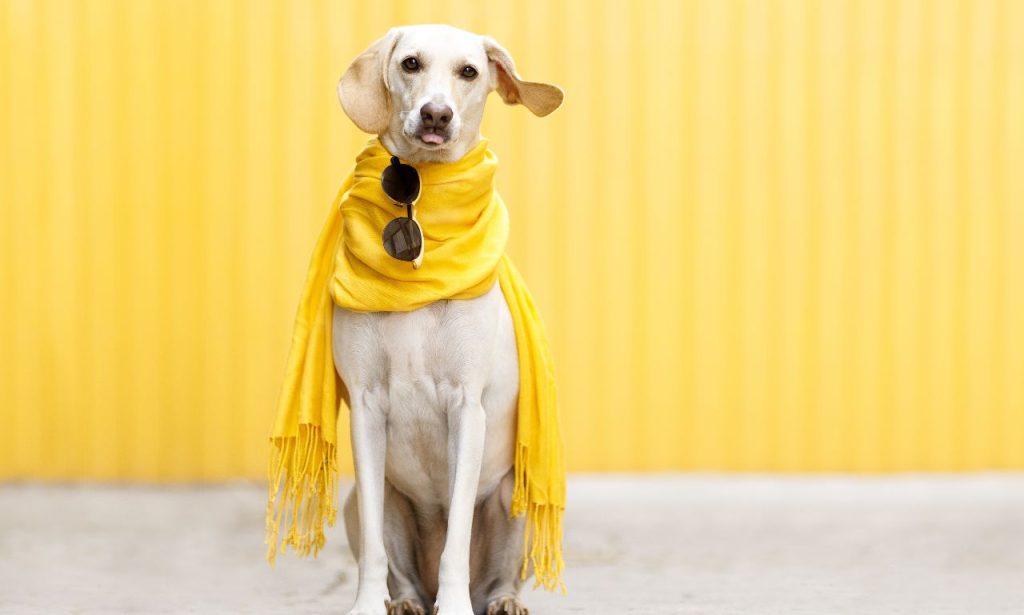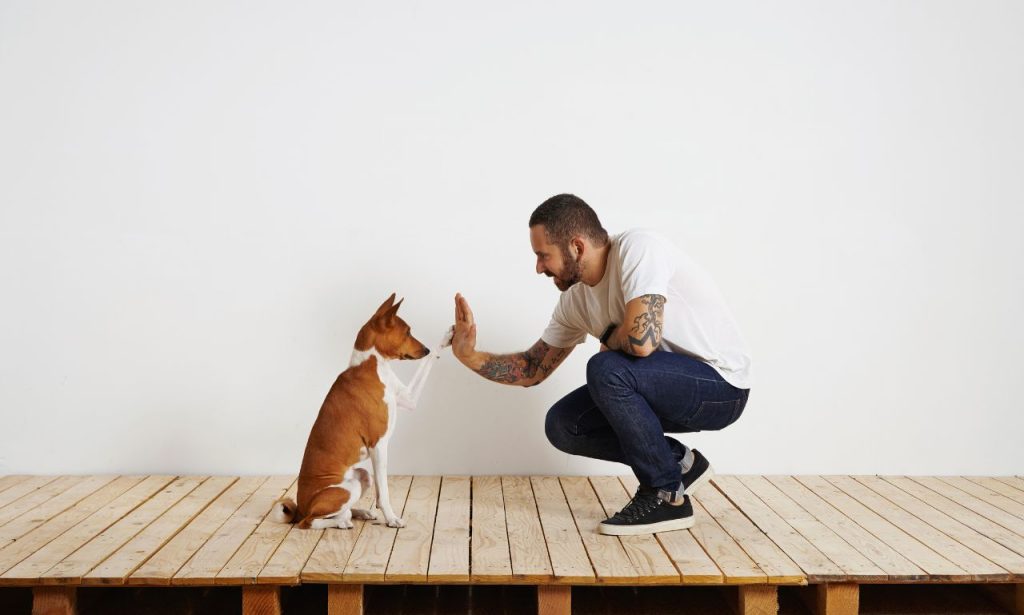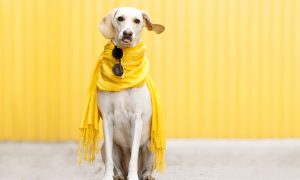You gaze at your furry companion, their soulful eyes reflecting the afternoon sun, their tail wagging with an enthusiasm that brightens your day. At that moment, a thought strikes you: “My dog is absolutely gorgeous! They could be models!”
And you know what? You might be right. The world of dog modeling is more diverse and accessible than ever before, offering exciting opportunities for charismatic canines of all shapes, sizes, and pedigrees. But like any competitive field, it requires dedication, preparation, and a sprinkle of insider knowledge to truly shine.
This comprehensive guide dives deep into the world of dog modeling, equipping you with the tools and strategies to help your furry friend strut their stuff on the path to paw-litical success.
From Pup to Professional
Before embarking on this exciting journey, it’s crucial to objectively assess your dog’s suitability for the modeling world. While love for your furry friend is unconditional, the modeling industry seeks specific traits and temperaments.
1. Temperament is Key:
- Calm and Composed: Can your dog remain relaxed and composed amidst distractions like loud noises, flashing lights, and unfamiliar people? A calm demeanor is essential, especially on bustling sets.
- Patient and Obedient: Modeling often involves holding poses for extended periods. Is your dog responsive to basic commands like “stay,” “sit,” and “down,” even when surrounded by distractions?
- Adaptable and Friendly: New environments, people, and even other animals are part and parcel of a model’s life. Does your dog adjust well to unfamiliar situations and interact politely with strangers and other dogs?
2. The Look Factor:
- Well-Groomed and Presentable: A dog model’s coat is their crowning glory. Regular grooming is essential, whether your dog boasts a sleek, short coat or a flowing, luxurious mane.
- Unique Features: While classic good looks are always appreciated, sometimes, it’s the unique and quirky features that truly captivate. Does your dog have striking eyes, an adorable underbite, or an unusual coat pattern that sets them apart?
- Photogenic Presence: The camera loves some dogs more than others. Does your dog naturally strike charming poses, or do they shy away from the lens? Experiment with taking photos to gauge their comfort level and natural charisma.
Create an Impressive Modeling Portfolio

Your dog’s modeling portfolio is their resume, showcasing their experience, versatility, and star quality. A well-crafted portfolio can be the deciding factor in landing lucrative gigs.
1. Essential Elements:
- Contact Information: Include your name, phone number, email address, and your dog’s name, breed, age, and any special skills.
- Professional Headshots: Begin with 3-5 strong headshots that highlight your dog’s best features and expressions.
- Variety of Images: Showcase your dog’s versatility with a range of images, including full-body shots, action shots, and images that capture their personality.
- High-Resolution Images: Use high-resolution images that are clear, sharp, and visually appealing.
2. Portfolio Formats:
- Online Platforms: Create a dedicated website or online portfolio using platforms like Wix, Squarespace, or even Instagram.
- Printed Portfolio: A printed portfolio, while less common in the digital age, can still be beneficial for in-person meetings. Choose a professional-looking binder and high-quality paper.
3. Tips for a Standout Portfolio:
- Keep it Concise and Relevant: Avoid overwhelming viewers with too many images. Select the best representations of your dog’s skills and potential.
- Update Regularly: As your dog gains experience, update their portfolio with new images and accomplishments.
- Seek Feedback: Ask friends, family, or even professionals in the industry for feedback on your dog’s portfolio.
Finding the Right Pack
Just like human models, many dog models are represented by talent agencies. These agencies act as intermediaries, connecting your dog with potential clients and managing their bookings.
1. Benefits of Working with an Agency:
- Access to Exclusive Opportunities: Agencies often have access to casting calls and projects that are not publicly advertised.
- Negotiation and Contract Expertise: Agencies handle the negotiation of contracts and ensure fair compensation for your dog’s work.
- Reduced Administrative Burden: Agencies manage scheduling, invoicing, and other administrative tasks, freeing up your time to focus on your dog’s training and well-being.
2. Finding Reputable Agencies:
- Industry Research: Research reputable canine talent agencies in your area or those that work nationally.
- Online Directories: Utilize online directories specifically for animal talent agencies.
- Referrals and Recommendations: Seek referrals from other dog owners in the modeling industry.
3. Evaluating Agencies:
- Reputation and Track Record: Research the agency’s reputation and track record. Look for agencies with a history of success and positive client reviews.
- Commission Rates: Understand the agency’s commission rates and any additional fees they charge.
- Communication and Transparency: Choose an agency that communicates clearly, responds promptly to inquiries, and maintains transparency throughout the process.
4. Submitting to Agencies:
- Follow Submission Guidelines: Each agency has specific submission guidelines. Carefully follow their instructions to increase your chances of being considered.
- Professionalism is Key: Present your dog’s portfolio and materials in a professional and organized manner.
Prepare Your Dog for Training and Classes
Training is the cornerstone of a successful dog modeling career. A well-trained dog is a joy to work with, both on and off set.
1. Basic Obedience is Non-Negotiable:
- Mastering Commands: Ensure your dog has a solid understanding of basic commands like “sit,” “stay,” “down,” “come,” and “leave it.”
- Loose-Leash Walking: No one wants a dog pulling on the leash during a photoshoot. Practice loose-leash walking to ensure your dog remains calm and controlled.
2. Specialized Training for Modeling:
- “Look” or “Focus” Command: Teach your dog to make eye contact on command. This is crucial for capturing those soulful, engaging shots.
- Posing and Holding Still: Practice having your dog hold various poses for short periods, gradually increasing the duration.
- Working with Props: Introduce your dog to props like hats, scarves, or even small objects they might need to interact with during shoots.
3. Positive Reinforcement is Key:
- Reward-Based Training: Use positive reinforcement techniques, such as treats, praise, and toys, to motivate your dog and make training enjoyable.
- Patience and Consistency: Training takes time and patience. Be consistent with your commands and rewards, and celebrate even small victories.
4. Consider Professional Help:
- Group Classes: Enroll in group obedience classes to socialize your dog and reinforce basic commands in a structured environment.
- Private Training: Consider private training sessions with a certified dog trainer to address specific behavioral challenges or focus on specialized modeling skills.
Understand the Importance of Professionalism
The dog modeling industry, like any professional field, thrives on professionalism. Maintaining a professional demeanor throughout the process is crucial for building a positive reputation and securing future opportunities.
1. Punctuality is Paramount:
- Respect Everyone’s Time: Arrive on time for all castings, shoots, and meetings. Time is valuable, and being punctual shows respect for everyone involved.
- Factor in Travel Time: Account for traffic, parking, and any unforeseen delays when planning your arrival time.
2. Communication is Key:

- Clear and Prompt Responses: Respond to emails and phone calls promptly and professionally.
- Address Concerns Directly: If you have questions or concerns, address them directly with the relevant parties in a respectful and professional manner.
3. On-Set Etiquette:
- Keep Your Dog Under Control: Ensure your dog is leashed and well-behaved at all times on set.
- Clean Up After Your Dog: Always bring waste bags and clean up after your dog promptly and discreetly.
- Be Respectful of the Set: Follow the directions of the photographer, director, and other crew members.
4. Professionalism Extends Online:
- Maintain a Positive Online Presence: Be mindful of your online presence, especially on social media platforms.
- Respond Professionally to Feedback: Welcome constructive criticism and address any negative feedback or reviews professionally.
Remember, your professionalism reflects not only on you but also on your dog. By conducting yourself with integrity and respect, you create a positive experience for everyone involved and enhance your dog’s chances of long-term success.
Conclusion
Embarking on a dog modeling journey with your furry companion can be an incredibly rewarding experience. It’s a chance to celebrate their unique charm, strengthen your bond, and potentially open doors to exciting opportunities. Remember, the journey requires dedication, patience, and a genuine love for your four-legged friend. By following the steps outlined in this guide, you’ll be well-equipped to navigate the exciting world of dog modeling and help your furry friend shine brightly in the spotlight.
ALSO READ: Ways to Earn Money While Pregnant: 15 Best Side Hustles for Expectant Moms
FAQs
The dog modeling world embraces diversity! While some breeds might be stereotypically associated with certain types of modeling, many clients seek dogs with unique looks, personalities, and skills, regardless of breed.
Shyness isn’t necessarily a deal-breaker. With patience, positive reinforcement training, and gradual exposure to new environments, you can help your shy dog build confidence and become more comfortable in front of the camera.
Mistakes happen! If your dog misbehaves, remain calm and patient. Provide them with a brief break, and try again when they’re more relaxed.




